#falco columbarius
Explore tagged Tumblr posts
Text
BOTD: Merlin

Photo: Tom Murray
"A rather small falcon, compact and fast-flying, the Merlin is a common breeder across the northern forests of North America and Eurasia. It feeds mostly on small birds, capturing them in mid-air in rapid pursuit. The Merlin is generally found in wild places, but since about 1960 it has become a common urban bird in several towns on the northern prairies; there it nests and remains to winter, relying on a steady supply of House Sparrows as prey."
- Audubon Field Guide
#birds#merlin#birds of north america#north american birds#falcons#birds of prey#raptors#birds of the us#birds of canada#birds of mexico#birds of central america#birds of the caribbean#birding#birdblr#birblr#bird watching#bird of the day#Falco columbarius
82 notes
·
View notes
Video
Merlin Woodlawn Cemetery Santa Monica 1285 by Pekabo Via Flickr: It's been a while since W9 and I saw the Merlin at Woodlawn Cemetery in Santa Monica. It looked like a Cooper's in terrible light... and W9 was snapping off photos. W9 is so tolerant with me trying to catch a clear Bushtit shot that I thought I would exercise my patience. Later her photos would prove that we saw a Merlin. A life bird for us both. So. Is this a Merlin? (And we saw Sizzor Guy tonight too! I'll be posting his photo soon. I'll put in an ebird report for both birds.)
#merlin#woodlawn cemetery birds#woodlawn cemetery#santa monica woodlawn cemetery#southern california birds#canon#pekabo90401#Bird watching#Birdwatching Los Angeles#friendship#Camaraderie#point and shoot camera#bridge camera#raptor#ID needed#star pine monkey#bird of prey#SX-50#canon SX-50#not a lifer#not a life bird#Falco columbarius#Pigeon Hawk#Faucon émerillon#Esmerejón#flickr
1 note
·
View note
Text
Golden Eagle, Bufflehead, Merlin, Brown Bear
#nature#aminals#birds#raptors#ornithology#falco columbarius#aquila chrysaetos#bucephala albeola#me#text#ursus arctos
0 notes
Note
I'd like to see some neat Merlins, please! Very on-brand for me.

Merlin (Falco columbarius), family Falconidae, order Falconiformes, Seneca, NY, USA
photograph by Tim Lenz

Merlin (Falco columbarius), family Falconidae, order Falconiformes, found across much of Eurasia, North America, and norther South America and northern Africa.
photograph by Tim Zurskowski

Merlin (Falco columbarius), family Falconidae, order Falconiformes, CA, USA
photograph by Brian Sullivan
311 notes
·
View notes
Text
life has been pretty bad recently, and I’ve been struggling for almost a week to draw anything but the realization that my old mythic Au Amy design was inaccurate made me pick my Apple Pencil up and get to work.
so she’s based off a North America subspecies of Merlin, Falco columbarius richardsonii, and the males are a pretty cool cobalt blue color but the females are a light chocolate cover and more streaked. Admittedly I think some of these reference photos I have are of Falco columbarius columbarius which is another subspecies that’s darker than a prairie merlin but it’s whatever : P

#marble hornets#marble hornets au#mh mythic au#amy walters#Birds are my saving grace dude#I love drawing them#theyre so cool!
57 notes
·
View notes
Text
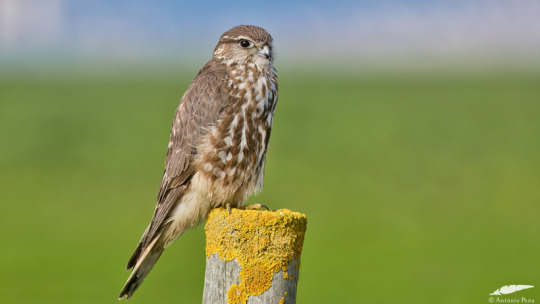
Merlin - Esmerilhão (Falco columbarius): female
Vila Franca de Xira/Portugal (26/01/2024)
[Nikon D500; ∑ 150/600mm C; 1/2000s; F6,3; 400 ISO]
30 notes
·
View notes
Text
Falco powelli Emslie & Mead, 2023 (new species)

(Type tarsometatarsus of Falco powelli [fused ankle and foot bones, left in each comparison, next to the tarsometatarsus of an American kestrel, Falco sparverius; scale bar unlabeled, but probably 15 mm], from Emslie and Mead, 2023)
Meaning of name: powelli = for John D. Powell [conservationist at the U.S. Forest Service]
Suggested common name: Powell's kestrel
Age: Probably Pleistocene (Late Pleistocene)
Where found: Combustion Cave, Nevada, U.S.A.
How much is known: A single left tarsometatarsus (fused ankle and foot bones).
Notes: F. powelli was a small falcon. Compared to similarly-sized falcons found in the Western United States today, its tarsometatarsus was longer than that of the American kestrel (F. sparverius) but less robust than that of the merlin (F. columbarius). Unlike some other birds from the Pleistocene of North America, F. powelli is so far only known from a single fossil site, which may suggest that it had specific habitat preferences. Based on other animals found at the same locality, it was likely adapted for an open sagebrush-steppe environment.
Reference: Emslie, S.D. and J.I. Mead. 2023. Two new late Quaternary avifaunas from the east-central Great Basin with the description of a new species of Falco. Western North American Naturalist 83: 33–50. doi: 10.3398/064.083.0104
#Palaeoblr#Birblr#Dinosaurs#Birds#Falco powelli#Powell's kestrel#Pleistocene#North America#Telluraves#2023#Extinct
50 notes
·
View notes
Note
Oooo now you’re really getting me into Clanmew. What are the names for birds and bird species in Clanmew?
The simple word for "Bird" evolved from Old Tribemew, at the Dawn of the Clans. A "Bird" is any two-winged flying animal with bones.
Bird (and bats) = Hafefyl
The major types of birds that the Clan cats recognize are as follows;
Raptor = Yassga A large, dangerous bird. Any avian perceived to pose a threat is in this category, including swans, ravens, and herons. Not just birds of prey.
Fowl = Eyawoon Large prey birds, the same level of danger as any other large quarry. Ducks, pheasants, gulls, cormorants, a chicken or peacock would also be in this category.
Game = Biyaw These are the birds that are eaten regularly, without much other consideration. It's where most of the 'odd' birds that don't fit other categories go. Pigeons, sparrows, quails.
Fancy = Pyrrya Any bird that would be a shameful thing to kill. That usually means songbirds with pleasing songs, but also colorful ones with pleasing patterns and behaviors, and even bats as they bring sickness when eaten.
Examples of "Yassga";
Golden Eagle (Aquila chrysaetos) = Nyieu A species only encountered in the Tribe mountain, before re-contact it was considered a legendary animal. The most dangerous flying species, capable of attacking small deer.
Sparrow Hawk (Accipiter nisus) = Yi'i When hawks are being noted for their speed, it's this species. They primarily hunt other birds, but not cats.
Red Kite (Milvus milvus) = Eeao This is the species that is both large and bold enough to take kittens. The vast majority of the time when hawks are mentioned in a dangerous context, it is a kite. Goshawks are not as numerous in this area as canon implies.
Kestrel (Falco tinnunculus) = Ipip Acrobatic, agile bird able to seemingly 'hover' in the air.
Marsh Harrier (Circus aeruginosus) = Yeepi Skilled attentive hunters that tend to hunt small mammals in open areas, especially wetlands. RiverClan and ShadowClan see these a lot.
Merlin (Falco columbarius) = Mweelili A small, generalist hunter that likes low-density areas like moorland, sparse woods, and brush. Known for being friendly with Harriers and eating just about anything.
Osprey (Pandion haliaetus) = Pyip Not actually a dangerous species; but the perception of danger will make Clan cats avoid this creature. Most commonly found by the sea.
Swan (Cygnus olor) = Hchom Large and quiet, these birds are so large they can drown a foolish warrior or break a bone.
Raven (Corvus corax) = Nyok A raven is considered a very dangerous bird not only for its size and ferocious beak, but because of how vengeful an unkindness can be. They remember Clan cats and seemingly mess with them on purpose.
Gray Heron (Ardea cinerea) = Krekek With their habit of spearing, bludgeoning, and even brutally drowning their prey, herons are feared and avoided. There are stories of herons picking off wayward kittens, but it's unknown if it's true or just a tale to stop them from wandering.
Eagle owl (Bubo bubo) = Huo The biggest, largest, most dangerous owl. Cats are a desired prey. No other owl will attack an adult warrior, and eagle owls are most often found in ThunderClan territory where there's thick forest and a nearby rocky cliff.
Tawny owl (Strix aluco) = Hrrua'u A loud, sonorous owl. Known best for being the species roosting in the old Owl Tree.
Barn owl (Tyto alba) = Weear This owl does not hoot, it screeches.
Examples of "Eyawoon";
Duck (Anas platyrhynchos) = Kwek There are several species of ducks they encounter occasionally-- but this one, the mallard duck, is the most common. ThunderClan liked to try and hunt them when they had Sunningrocks, sometimes inflaming tensions between clans.
Ring-necked Pheasant (Phasianus colchicus) = Rauqa Named for the territorial cry of a male pheasant, the most impressive prize that a ThunderClan warrior can catch.
Black-headed Gull (Chroicocephalus ridibundus) = Rewp Not just a seabird; found further in-land and will make do with just about any body of water. This is a species regularly found and hunted at Sanctuary Lake, and also the type that Gullswoop is named for.
Herring Gull (Larus argentatus) = Eeyar The Clan cats haven't been doing salt patrols long enough yet to know that this is absolutely not an Eyawoon, but in fact, a Yassga. Sandwhich-stealing BASTARDS. They're the ones with the gray back, yellow beak, little red mark on the lip, and feral Grinch-looking eyes. If you live by the ocean you know. (There is another species that looks similar but Clan cats think they are the same animal)
Cormorant (Phalacrocorax carbo) = Waer A large, black fishing bird that dives underwater to catch its prey. Revered by RiverClan.
Carrion crow (Corvus corone) = Rawk This is the species being referred to when "crowfood" is mentioned. Rawkwoo.
Magpie (Pica pica) = Ke'ek Glossy, beautiful blue, black, and white bird. Very intelligent and a difficult catch; like crows and ravens they are smart enough to have a concept of social learning.
Egret (Egretta garzetta) = Bwawa Though they have many of the same 'brutal' behaviors as herons, they're too small to cause damage and hence are sorted into 'eyawoon'
There is currently no word for Chicken but Ravenpaw is probably using the term Barley likes best. Except the rooster which he immediately named "Urkaroona."
Examples of "Biyaw";
Wood Pigeon (Columba palumbus) = Huwoohoo Big, fat, common, a popular meal bird.
Dove (Columba livia) = Hrru Funfact: In TPB, there is a moment where Fireheart scolds Cloudpaw for calling a pigeon a 'dove.' In English, pigeons and doves are synonyms, but in Clanmew, Cloudtail had killed a Huwoohoo, but called it a Hrru.
Sparrow (Passer domesticus and Passer montanus) = Qee Though there's a difference in plumage between these species, Clan cats think they are the same species because their songs are nearly identical. Passer montanus (Eurasian Tree Sparrow) is just considered what a sparrow looks like when it lives deep in the woods.
Quail (Coturnix coturnix) = Wipiwik A round little ground bird that's very fast.
Jackdaw (Coloeus monedula) = Miaw A black-and gray bird with a mewling call.
Song Thrush (Turdus philomelos) = Errari This bird has many songs, which is taken by Clan cats as intentionally trying to hide its true name. They may even be changing their appearances to look like a Mistle Thrush; clearly they're something much more intelligent, since they use stones to smash open snail shells.
Mistle Thrush (Turdus viscivorus) = Charrech Much larger than a Song Thrush. Brave, one of the few birds that sings even in terrible weather, but named for the angry sound it makes when it's guarding berry bushes in winter.
Fieldfare (Turdus pilaris) = Apapach A very important winter prey bird which travels in large flocks. Bullied by Mistle Thrushes for good food sources.
Redwing (Turdus iliacus) = Eean Similar to a fieldfare, but smaller and usually in tinier groups. The call is very different, so these birds are not usually confused by Clan cats unless they're seen first. Apapach are the preferred prey of the two.
Blackbird (Turdus merula) = Oohee Males are blue-black with a yellow ring around the eye, and females are a ruddy dappled brown.
Eurasian jay (Garrulus glandarius) = Arkr Loud, aggressive medium-sized birds. Pale with blue wings.
Examples of "Pyrrya"
Bat (4 SPECIES) = Fip This refers to the sound of their wings mid-flight. No species of bat is consumed. If eaten they can bring horrible sickness, seen as a punishment for killing an holy night-loving animal with such a beautiful voice and great hunting skill. Clan cats are able to hear bat songs out of range of human hearing!
Pipistrelle (Pipistrellus pipistrellus) = Popep A very small, common bat species that usually eats mosquitoes and midges in wet areas.
Soprano Pipistrelle (Pipistrellus pygmaeus) = Ipi'ip Humans can barely tell the difference between these two, but Clan cats recognize that the song of a Soprano is much faster, higher-pitched, and absolutely sonorous. Considered the night version of a wren and held in high esteem.
Long-eared Brown Bat (Plecotus auritus) = Fepfr A very quiet, low-flying bat with a habit for doing some ground-hunting. This is usually the first bat that an apprentice sees instead of hears, and the one which is used to teach them to not hunt bats. It has a very modest song, which Clan cats explain as mourning for every bat accidentally killed and discarded. Rarely called the "Fip Hhass;" the Whisper Bat.
Noctule (Nyctalus noctula) = Shi'po The largest bat, has huge teeth and a broad face. Females both migrate and hibernate, but males stay awake all year and sing with a very distinctive tune hard to put into a word.
Songbird (SEVERAL SPECIES) = Pigu Note: Most songbirds are down here in this category, but some, like Song Thrushes, are only here conditionally. Usually if there's enough food to go around.
Wren (Troglodytes troglodytes) = Pi'ie The song of this tiny bird is so fast and beautiful that Clan cats have a hard time putting it into words; these birds are not killed except by fiends and rogues.
Robin (Erithacus rubecula) = Birri This is a small, gray-and-brown bird with a bright orange face. They're not very filling, pretty, and sing a delightful song, so like the other species in this category they aren't taken unless there's a serious need.
Woodcock (Scolopax rusticola) = Mweep Though large and delicious, these birds are so enjoyed that killing them is dishonorable without approval. They're the only bird that can fly away with its young, it dances and puts on air shows as mating rituals, and they're quite rare.
There are more species than this found in the area but this should be more than enough for now. Here's the most significant "bird" species they experience on a regular basis!
71 notes
·
View notes
Text



[ID: Two photos of a juvenile merlin (falco columbarius) eating a fresh kill followed by a photo of an adult merlin on the ground nearby, watching over it. End ID]
Stopped by the city park today and the merlin family was out and about! This is the first time I've seen the young out of the nest. The little one in the first two pictures was too small to fly away with its food, so it sat and ate it on the sidewalk, which really upset mom and dad merlin. They were circling and screeching constantly while this little guy just enjoyed its meal.
#birds#birding#merlin#falcon#photography#wildlife photography#animals#my photos#i almost didnt go to the park to do my birding today#almost missed out haha
5 notes
·
View notes
Text
All animal species (and a couple algae) that have kept the same scientific name since Linnaeus
The first work of taxonomy that is considered as having any scientific authority for animal species was the 10th edition of Linnaeus' Systema Naturae, published in 1758. (Also a book on spiders called Aranei Suecici, published one year before.) That's the foundational text of the binominal system of nomenclature of species still in use today. Since then most of Linnaeus' original species (4379 species, of which 185 mammals, 554 birds, 217 "amphibians" (including reptiles and cartilaginous fish), 379 fishes, 2104 "insects" (including various arthropods, of which 664 are beetles and 543 are moths & butterflies crammed into only 3 genera), and 940 "worms" (including basically all other invertebrates, and even some protists and algae)) have been dismembered, renamed, or at least moved to different genera (e.g. the house sparrow went from Fringilla domestica to Passer domesticus).
Here is a list of all of Linnaeus' original species from 1758 that still retain their original name. I believe they are 484 in total.
"Mammalia"
(Primates)
Homo sapiens (human)
Lemur catta (ring-tailed lemur)
Vespertilio murinus (rearmouse bat)
(Bruta)
Elephas maximus (Asian elephant)
Trichechus manatus (West Indian manatee)
Bradypus tridactylus (three-toed sloth)
Myrmecophaga tridactyla (giant anteater)
Manis pentadactylus (Chinese pangolin)
(Ferae)
Phoca vitulina (harbor seal)
Canis familiaris (dog)
Canis lupus (grey wolf)
Felis catus (house cat)
Viverra zibetha (Indian civet)
Mustela erminea (stoat)
Mustela furo (ferret)
Mustela lutreola (European mink)
Mustela putorius (wild ferret)
Ursus arctos (brown bear)
(Bestiae)
Sus scrofa (wild boar/pig)
Dasypus septemcinctus (seven-banded armadillo)
Dasypus novemcinctus (nine-banded armadillo)
Erinaceus europaeus (European hedgehog)
Talpa europaea (European mole)
Sorex araneus (common shrew)
Didelphis marsupialis (common opossum)
(Glires)
Rhinoceros unicornis (Indian rhinoceros)
Hystrix brachyura (Malayan porcupine)
Hystrix cristata (crested porcupine)
Lepus timidus (common hare)
Castor fiber (European beaver)
Mus musculus (house mouse)
Sciurus vulgaris (red squirrel)
(Pecora)
Camelus dromedarius (dromedary camel)
Camelus bactrianus (Asian camel)
Moschus moschiferus (musk deer)
Cervus elaphus (red deer)
Capra hircus (goat)
Capra ibex (Alpine ibex)
Ovis aries (sheep)
Bos taurus (cow)
Bos indicus (zebu)
(Belluae)
Equus caballus (horse)
Equus asinus (donkey)
Equus zebra (mountain zebra)
Hippopotamus amphibius (hippopotamus)
(Cete)
Monodon monoceros (narwhal)
Balaena mysticetus (bowhead whale)
Physeter macrocephalus (sperm whale)
Delphinus delphis (common dolphin)
"Aves"
(Accipitres)
Vultur gryphus (Andean condor)
Falco tinnunculus (common kenstrel)
Falco sparverius (sparrowhawk)
Falco columbarius (pigeonhawk)
Falco subbuteo (Eurasian hobby)
Falco rusticolus (gyrfalcon)
Strix aluco (tawny owl)
Lanius excubitor (great grey shrike)
Lanius collurio (red-backed shrike)
Lanius schach (long-tailed shrike)
(Picae)
Psittacus erithacus (grey parrot)
Ramphastos tucanus (white-throated toucan)
Buceros bicornis (great hornbill)
Buceros rhinoceros (rhinoceros hornbill)
Crotophaga ani (smooth-billed ani)
Corvus corax (raven)
Corvus corone (carrion crow)
Corvus frugilegus (rook)
Corvus cornix (hooded crow)
Coracias oriolus (golden oriole)
Coracias garrulus (European roller)
Gracula religiosa (hill myna)
Paradisaea apoda (greater bird-of-paradise)
Cuculus canorus (common cuckoo)
Jynx torquilla (wryneck)
Picus viridis (green woodpecker)
Sitta europaea (Eurasian nuthatch)
Merops apiaster (European bee-eater)
Merops viridis (blue-throated bee-eater)
Upupa epops (Eurasian hoopoe)
Certhia familiaris (Eurasian treecreeper)
Trochilus polytmus (red-billed streamertail hummingbird)
(Anseres)
Anas platyrhynchos (mallard duck)
Anas crecca (teal duck)
Mergus merganser (common merganser)
Mergus serrator (red-breasted merganser)
Alca torda (razorbill auk)
Procellaria aequinoctialis (white-chinned petrel)
Diomedea exulans (wandering albatross)
Pelecanus onocrotalus (great white pelican)
Phaeton aethereus (red-billed tropicbird)
Larus canus (common gull)
Larus marinus (great black-backed gull)
Larus fuscus (lesser black-backed gull)
Sterna hirundo (common tern)
Rhynchops niger (black skimmer)
(Grallae)
Phoenicopterus ruber (American flamingo)
Platalea leucorodia (Eurasian spoonbill)
Platalea ajaia (roseate spoonbill)
Mycteria americana (wood stork)
Ardea cinerea (grey heron)
Ardea herodias (blue heron)
Ardea alba (great egret)
Scolopax rusticola (Eurasian woodcock)
Charadrius hiaticula (ringed plover)
Charadrius alexandrinus (Kentish plover)
Charadrius vociferus (killdeer plover)
Charadrius morinellus (Eurasian dotterel)
Recurvirostra avosetta (pied avocet)
Haematopus ostralegus (Eurasian oystercatcher)
Fulica atra (Eurasian coot)
Rallus aquaticus (water rail)
Psophia crepitans (grey-winged trumpeter)
Otis tarda (great bustard)
Struthio camelus (ostrich)
(Gallinae)
Pavo cristatus (Indian peafowl)
Meleagris gallopavo (wild turkey)
Crax rubra (great curassow)
Phasianus colchicus (common pheasant)
Tetrao urogallus (western capercaillie)
(Passeres)
Columba oenas (stock dove)
Columba palumbus (wood pigeon)
Alauda arvensis (Eurasian skylark)
Sturnus vulgaris (European starling)
Turdus viscivorus (mistle thrush)
Turdus pilaris (fieldfare thrush)
Turdus iliacus (redwing thrush)
Turdus plumbeus (red-legged thrush)
Turdus torquatus (ring ouzel)
Turdus merula (blackbird)
Loxia curvirostra (crossbill)
Emberiza hortulana (ortolan bunting)
Emberiza citrinella (yellowhammer)
Emberiza calandra (corn bunting)
Fringilla coelebs (common chaffinch)
Motacilla alba (white wagtail)
Motacilla lava (yellow wagtail)
Parus major (great tit)
Hirundo rustica (barn swallow)
Caprimulgus europaeus (European nightjar)
"Amphibia"
(Reptiles)
Testudo graeca (Greek tortoise)
Draco volans (flying dragon)
Lacerta agilis (sand lizard)
Rana temporaria (common frog)
(Serpentes)
Crotalus horridus (timber rattlesnake)
Crotalus durissus (tropical rattlesnake)
Boa constrictor (common boa)
Coluber constrictor (eastern racer)
Anguis fragilis (slowworm)
Amphisbaena alba (red worm lizard)
Caecilia tentaculata (white-bellied caecilian)
(Nantes)
Petromyzon marinus (sea lamprey)
Raja clavata (thornback ray)
Raja miraletus (brown ray)
Squalus acanthias (spiny dogfish)
Chimaera monstrosa (rabbitfish)
Lophius piscatorius (anglerfish)
Acipenser sturio (sea sturgeon)
Acipenser ruthenus (sterlet sturgeon)
"Pisces"
(Apodes)
Muraena helena (Mediterranean moray)
Gymnotus carapo (banded knifefish)
Trichiurus lepturus (cutlassfish)
Anarhichas lupus (Atlantic wolffish)
Ammodytes tobianus (lesser sandeel)
Xiphias gladius (swordfish)
Stromateus fiatola (blue butterfish)
(Jugulares)
Callionymus lyra (common dragonet)
Uranoscopus scaber (stargazer)
Trachinus draco (greater weever)
Gadus morhua (Atlantic cod)
Blennius ocellaris (butterfly blenny)
Ophidion barbatum (snake cusk-eel)
(Thoracici)
Cyclopterus lumpus (lumpsucker)
Echeneis naucrates (sharksucker)
Coryphaena equiselis (pompano)
Coryphaena hippurus (dorado)
Gobius niger (black goby)
Govius paganellus (rock goby)
Cottus gobio (European bullhead)
Scorpaena porcus (black scorpionfish)
Scorpaena scrofa (red scorpionfish)
Zeus faber (John Dory)
Pleuronectes platessa (European plaice)
Chaetodon striatus (banded butterflyfish)
Chaetodon capistratus (foureye butterflyfish)
Sparus aurata (gilt-head bream)
Labrus merula (brown wrasse)
Labrus mixtus (cuckoo wrasse)
Labrus viridis (green wrasse)
Sciaena umbra (brown meagre)
Perca fluviatilis (European perch)
Gasterosteus aculeatus (three-spined stickleback)
Scomber scombrus (Atlanti mackerel)
Mullus barbatus (red mullet)
Mullus surmuletus (surmullet)
Trigla lyra (piper gurnard)
(Abdominales)
Cobitis taenia (spined loach)
Silurus asotus (Amur catfish)
Silurus glanis (Wels catfish)
Loricaria cataphracta (suckermouth catfish)
Salmo carpio (Garda trout)
Salmo trutta (brown trout)
Salmo salar (Atlantic salmon)
Fistularia tabacaria (bluespotted cornetfish)
Esox lucius (northern pike)
Argentina sphyraena (European argentine)
Atherina hepsetus (Mediterranean sand smelt)
Mugil cephalus (flathead mullet)
Exocoetus volitans (tropical flying fish)
Polynemus paradiseus (Paradise threadfin)
Clupea harengus (Atlantic herring)
Cyprinus carpio (common carp)
(Branchiostegi)
Mormyrus caschive (bottlenose elephantfish)
Balistes vetula (queen triggerfish)
Ostracion cornutus (longhorn cowfish)
Ostracion cubicus (yellow boxfish)
Tetraodon lineatus (Fahaka pufferfish)
Diodon hystrix (spot-fin porcupinefish)
Diodon holocanthus (long-spine porcupinefish)
Centriscus scutatus (grooved shrimpfish)
Syngnathus acus (common pipefish)
Syngnathus pelagicus (pelagic pipefish)
Syngnathus typhle (broad-nosed pipefish)
Pegasus volitans (longtail seamoth)
"Insecta"
(Coleoptera)
Scarabaeus sacer (sacred scarab)
Dermestes lardarius (larder beetle)
Dermestes murinus (larder beetle)
Hister unicolor (clown beetle)
Hister quadrimaculatus (clown beetle)
Silpha obscura (carrion beetle)
Cassida viridis (tortoise beetle)
Cassida nebulosa (tortoise beetle)
Cassida nobilis (tortoise beetle)
Coccinella trifasciata (ladybug)
Coccinella hieroglyphica (ladybug) [Coccinella 5-punctata, 7-punctata, 11-punctata, and 24-punctata survive as quinquepunctata, septempunctata, undecimpunctata, and vigintiquatorpunctata]
Chrysomela populi (leaf beetle)
Chrysomela lapponica (leaf beetle)
Chrysomela collaris (leaf beetle)
Chrysomela erythrocephala (leaf beetle)
Curculio nucum (nut weevil)
Attelabus surinamensis (leaf-rolling weevil)
Cerambyx cerdo (capricorn beetle)
Leptura quadrifasciata (longhorn beetle)
Cantharis fusca (soldier beetle)
Cantharis livida (soldier beetle)
Cantharis oscura (soldier beetle)
Cantharis rufa (soldier beetle)
Cantharis lateralis (soldier beetle)
Elater ferrugineus (rusty click beetle)
Cicindela campestris (green tiger beetle)
Cicindela sylvatica (wood tiger beetle)
Buprestis rustica (jewel beetle) [Buprestis 8-guttata survives as octoguttata]
Dytiscus latissimus (diving beetle)
Carabus coriaceus (ground beetle)
Carabus granulatus (ground beetle)
Carabus nitens (ground beetle)
Carabus hortensis (ground beetle)
Carabus violaceus (ground beetle)
Tenebrio molitor (mealworm)
Meloe algiricus (blister beetle)
Meloe proscarabaeus (blister beetle)
Meloe spec (blister beetle)
Mordela aculeata (tumbling glower beetle)
Necydalis major (longhorn beetle)
Staphylinus erythropterus (rove beetle)
Forficula auricularia (common earwig)
Blatta orientalis (Oriental cockroach)
Gryllus campestris (field cricket)
(Hemiptera)
Cicada orni (cicada)
Notonecta glauca (backswimmer)
Nepa cinerea (water scorpion)
Cimex lectularius (bedbug)
Aphis rumici (black aphid)
Aphis craccae (vetch aphid)
Coccus hesperidum (brown scale insect)
Thrips physapus (thrips)
Thrips minutissimum (thrips)
Thrips juniperinus (thrips)
(Lepidoptera)
Papilio paris (Paris peacock butterfly)
Papilio helenus (red Helen butterfly)
Papilio troilus (spicebush swallowtail butterfly)
Papilio deiphobus (Deiphobus swallowtail butterfly)
Papilio polytes (common Mormon butterfly)
Papilio glaucus (eastern tiger swallowtail butterfly)
Papilio memnon (great Mormon butterfly)
Papilio ulysses (Ulysses butterfly)
Papilio machaon (Old World swallowtail butterfly)
Papilio demoleus (lime swallowtail butterfly)
Papilio nireus (blue-banded swallowtail butterfly)
Papilio clytia (common mime butterfly)
Sphinx ligustri (privet hawk-moth)
Sphinx pinastri (pine hawk-moth) [genus Phalaena was suppressed, but seven subgenera created by Linnaeus are now valid as genera]
(Neuroptera)
Libellula depressa (chaser dragonfly)
Libellula quadrimaculata (four-spotted skimmer dragonfly)
Ephemera vulgata (mayfly)
Phryganea grandis (caddisfly)
Hemerobius humulinus (lacewing)
Panorpa communis (scorpionfly)
Panorpa germanica (scorpionfly)
Raphidia ophiopsis (snakefly)
(Hymenoptera)
Cynips quercusfolii (oak gall wasp)
Tenthredo atra (sawfly)
Tenthredo campestris (sawfly)
Tenthredo livida (sawfly)
Tenthredo mesomela (sawfly)
Tenthredo scrophulariae (sawfly)
Ichneumon extensorius (parasitoid wasp)
Ichneumon sarcitorius (parasitoid wasp)
Sphex ichneumoneus (digger wasp)
Vespa crabro (European hornet)
Apis mellifera (honey bee)
Formica fusca (silky ant)
Mutilla europaea (large velvet ant)
(Diptera)
Oestrus ovis (sheep botfly)
Tipula oleracea (marsh cranefly)
Tipula hortorum (cranefly)
Tipula lunata (cranefly)
Musca domestica (housefly)
Tabanus bovinus (pale horsefly)
Tabanus calens (horsefly)
Tabanus bromius (brown horsefly)
Tabanus occidentalis (horsefly)
Tabanus antarcticus (horsefly)
Culex pipiens (house mosquito)
Empis borealis (dance fly)
Empis pennipes (dance fly)
Empis livida (dance fly)
Conops flavipes (thick-headed fly)
Asilus barbarus (robberfly)
Asilus crabroniformis (hornet robberfly)
Bombylius major (bee fly)
Bombylius medius (bee fly)
Bombylius minor (bee fly)
Hippobosca equina (forest fly)
(Aptera)
Lepisma saccharina (silverfish)
Podura aquatica (water springtail)
Termes fatale (termite)
Pediculus humanus (human louse)
Pulex irritans (human flea)
Acarus siro (flour mite)
Phalangium opilio (harvestman)
Araneus angulatus (orb-weaving spider)
Araneus diadematus (European garden spider)
Araneus marmoreus (marbled orbweaver)
Araneus quadratus (four-spotted orbweaver -- last four are by Clerck 1757, some of the very few surviving pre-Linnean names!)
Scorpio maurus (large-clawed scorpion)
Cancer pagurus (brown crab)
Oniscus asellus (common woodlouse)
Scolopendra gigantea (giant centipede)
Scolopendra morsitans (red-headed centipede)
Julus fuscus (millipede)
Julus terrestris (millipede)
"Vermes"
(Intestina)
Gordius aquaticus (horsehair worm)
Lumbricus terrestris (common earthworm)
Ascaris lumbricoides (giant roundworm)
Fasciola hepatica (liver fluke)
Hirudo medicinalis (medicinal leech)
Myxine glutinosa (Atlantic hagfish)
Teredo navalis (shipworm)
[shout out to Furia infernalis, a terrifying carnivorous jumping worm that Linnaeus described, but which doesn't seem to actually exist]
(Mollusca)
Limax maximus (leopard slug)
Doris verrucosa (warty nudibranch)
Nereis caerulea (ragworm)
Nereis pelagica (ragworm)
Aphrodita aculeata (sea mouse)
Lernaea cyprinacea (anchor worm)
Scyllaea pelagica (Sargassum nudibranch)
Sepia officinalis (common cuttlefish)
Asterias rubens (common starfish)
Echinus esculentus (edible sea urchin)
(Testacea)
Chiton tuberculatus (West Indian green chiton)
Lepas anatifera (goose barnacle)
Pholas dactylus (common piddock)
Mya arenaria (softshell clam)
Mya truncata (truncate softshell)
Solen vagina (razor clam)
Tellina laevigata (smooth tellin)
Tellina linguafelis (cat-tongue tellin)
Tellina radiata (sunrise tellin)
Tellina scobinata (tellin)
Cardium costatum (ribbed cockle)
Donax cuneatus (wedge clam)
Donas denticulatus (wedge clam)
Donax trunculus (wedge clam)
Venus casina (Venus clam)
Venus verrucosa (warty venus)
Spondylus gaederopus (thorny oyster)
Spondylus regius (thorny oyster)
Chama lazarus (jewel box shell)
Chama gryphoides (jewel box shell)
Arca noae (Noah's ark shell)
Ostrea edulis (edible oyster)
Anomia aurita (saddle oyster)
Anomia ephippium (saddle oyster)
Anomia hysterita (saddle oyster)
Anomia lacunosa (saddle oyster)
Anomia spec (saddle oyster)
Anomia striatula (saddle oyster)
Mytilus edulis (blue mussel)
Pinna muricata (pen shell)
Pinna nobilis (fan mussel)
Pinna rudis (rough pen shell)
Argonauta argo (argonaut)
Nautilus pompilius (chambered nautilus)
Conus ammiralis (admiral cone snail)
Conus aulicus (princely cone snail)
Conus aurisiacus (cone snail)
Conus betulinus (betuline cone snail)
Conus bullatus (bubble cone snail)
Conus capitaneus (captain cone snail)
Conus cedonulli (cone snail)
Conus ebraeus (black-and-white cone snail)
Conus figulinus (fig cone snail)
Conus genuanus (garter cone snail)
Conus geographus (geographer cone snail)
Conus glaucus (glaucous cone snail)
Conus granulatus (cone snail)
Conus imperialis (imperial cone snail)
Conus litteratus (lettered cone snail)
Conus magus (magical cone snail)
Conus marmoreus (marbled cone snail)
Conus mercator (trader cone snail)
Conus miles (soldier cone snail)
Conus monachus (monastic cone snail)
Conus nobilis (noble cone snail)
Conus nussatella (cone snail)
Conus princeps (prince cone snail)
Conus spectrum (spectrecone snail)
Conus stercusmuscarum (fly-specked cone snail)
Conus striatus (striated cone snail)
Conus textile (cloth-of-gold cone snail)
Conus tulipa (tulip cone snail)
Conus varius (freckled cone snail)
Conus virgo (cone snail)
Cypraea tigris (tiger cowry shell)
Bulla ampulla (Pacific bubble shell)
Voluta ebraea (Hebrew volute)
Voluta musica (music volute)
Buccinum undatum (common whelk)
Strombus pugilis (fighting conch)
Murex tribulus (caltrop murex)
Trochus maculatus (maculated top shell)
Turbo acutangulus (turban shell)
Turbo argyrostomus (silver-mouth turban shell)
Turbo chrystostomus (gold-mouth turban shell)
Turbo marmoratus (green turban shell)
Turbo petholatus (turban shell)
Turbo sarmaticus (giant turban shell)
Helix lucorum (Mediterranean snail)
Helix pomatia (Roman snail)
Nerita albicilla (blotched nerite)
Nerita chamaeleon (nerite)
Nerita exuvia (snakeskin nerite)
Nerita grossa (nerite)
Nerita histrio (nerite)
Nerita peloronta (bleeding tooth)
Nerita plicata (nerite)
Nerita polita (nerite)
Nerita undata (nerite)
Haliotis asinina (ass-ear abalone)
Haliotis marmorata (marbled abalone)
Haliotis midae (South African abalone)
Haliotis parva (canaliculate abalone)
Haliotis tuberculata (green ormer)
Haliotis varia (common abalone)
Patella caerulea (Mediterranean limpet)
Patella pellucida (blue-rayed limpet)
Patella vulgata (European limpet)
Dentalium elephantinum (elephant tusk)
Dentalium entale (tusk shell)
[genus Serpula is still in use with none of its original species]
(Lithophyta)
Tubipora musica (organ pipe coral)
Millepora alcicornis (sea ginger fire coral)
Madrepora oculata (zigzag stone coral)
(Zoophyta)
Isis hippuris (sea bamboo)
Isis ochracea (sea bamboo)
Gorgonia flabellum (Venus fan)
Gorgonia ventalina (purple sea fan)
Alcyonium bursa (soft coral)
Alcyonium digitatum (dead man's fingers)
Tubularia indivisa (oaten ipes hydroid)
Corallina officinalis (coralline red alga)
Sertularia argentea (sea fern)
Sertularia cupressoides (hydroid)
Pennatula phosphorea (sea pen)
Taenia solium (pork tapeworm)
Volvox globator (colonial alga)
[genus Hydra is still in use with none of its original species]
15 notes
·
View notes
Text
Karelian words - Hawks And Eagles
Lindu - Bird Haukka, havukka, sokola - Hawk Kokko - Eagle
Čiekšo, kalakokko, sieksa - Osprey (Pandion haliaetus)
Isokokko, kokko - Golden eagle (Aquila chrysaetos)
Merikokko, orla - White-tailed sea eagle (Haliaeetus albicilla)
Čirkkuishaukka - Sparrowhawk (Accipiter nisus)
Hiilihaukka, hiirihaukka, kiekki - Common buzzard (Buteo buteo)
Kaskilindu, tulihaukka - Black kite (Milvus migrans)
Kiirishaukka - Eurasian hobby (Falco subbuteo)
Kokkohaukka, koppalahaukka - Northern goshawk (Accipiter gentilis)
Käyjähaukka, muuttujahaukka - Rough-legged buzzard (Buteo lagopus)
Pilvihaukka, tuulenkiändäi, tuulentekieńe - Common kestrel (Falco tinnunculus)
Vienitkiilindu - Merlin (Falco columbarius)
16 notes
·
View notes
Text
Naomi: headcanons & aesthetics
Mun Ari: A precious anon ask for this and since it was getting SO LONG (as always), I decided to make individual posts of Naomi and Sabine so I deliver their request! I hope you enjoy it!
[Note: * means something I invented for my AU since there are many blank spaces in the DL verse]
Naomi Nakahara von Adler:
She's the heiress of the Eagle clan*
The Eagle clan remains neutral most of the time. They did participated in the big war, but now they want to be "on good terms" with the other clans. However, they won't hesitate to attack if they feel threatened or sees a great oportunity to invade.
Her mother is queen Kouyou Nakahara and his father is king Kouyosuke Nakahara*.
Naomi physically takes mostly after her father although she inherited her grandma's eye color, but in terms of personality she takes after her mother. They look a little like this:

It was an arranged mariage, but her parents always respected each other*. They were a great team in terms of ruling and raising their only daughter. Since they were very involved rasing Naomi, they decided for her to be an only child. However, Naomi always wanted to have siblings though.
Her eyes are almond shaped, long, curly, thick eyelashes and a beautiful hazel color with hints of green. Like this:
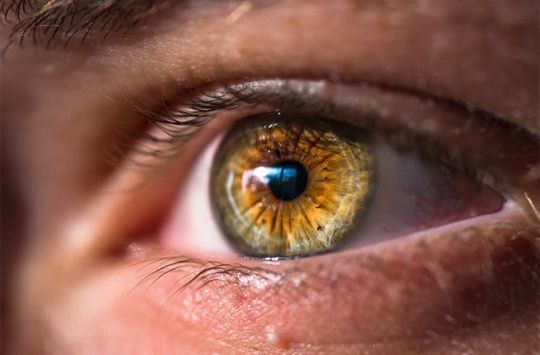
Her hair is a beautiful black with hints of dark brown when exposed to the sunlight. Is long (reaches her lower back) and straight and prefers to keep her forehead exposed, so no bangs.
She has sharp jawline, porcelain skin, but she adds some hints of color with a very simple makeup (a very natural-like aspect). She also has freckles, so she looks younger than her actual age. Ari one time described her as a porcelain doll with cute freckles, and since then Naomi doesn't hide them unless there are important events that she wants to look imposing and to be taken seriously.
Gorgeous body, attractive and generous chest, hourglass figure and a great sense of fashion. She dress with the "old-rich aesthetic" as she's quite conservative with her appearance as a member of the royal family. Something like this, but with freckles:

As a member of the Eagle clan and being an Eagle demon, she can transform into an eagle*. Since it is said that the Eagle clan is in the east of the Makai and mainly has beaches as their natural environment, I choose the Oprey Pandion haliaetus also known as Sea Hawk, River Hawk or Fish Hawk (image below). Her feather are super soft and repel water when she hunts (cause' she does and is a popular sport in the Eagle clan: fishing mixed with hunt in their animal form). Her familiars are hawks which are smaller in size (I thought about a Falco columbarius aka Merlin Hawk [second picture]).

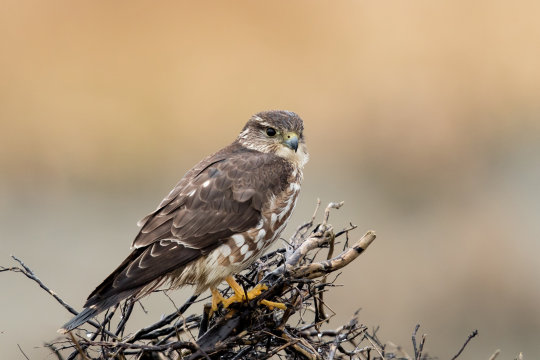
She's around the same age as Reiji, but physically speaking she'll always look 3-4 years older than Ari. As a demon herself, she can control her appearance, so she'll make herself look older than Ari as years go by and Ari naturally gets older. [At some point, Ari turns in an inmortal being of course~].
Naomi is consider a beauty both in the human and demon world. Her demonic nature is behind it and attracts more attention in the human word due to this. This doesn't mean she likes it though.
Personality like: she's very serious, polite, with a sharp tongue, brutally honest, cold and hates being surrounded with interested people overe everything. She's also very intelligent and calculating, sassy and sarcastic. This is for everyone, BUT those she finds dear to her. She has this "big-sister energy", very affectionate, loyal, overprotective and sweet/softie. She appreciates honesty, uniqueness and kindness over all in people she chooses to love.
She finds humans very interesting, this love for everything human-related was born at a very young age. She spent various periods in the human world due to the constant tension between clans. She to had a human nanny/teacher and that marked her greatly.
The nanny's name was Sophia Trovar and was doting and loving with Naomi. She never hid the truth of the questions Naomi made no matter how hard/crude they could be. Even if she was weak, she protected Naomi and treated her as a loving aunt. As a human oblivious of her student's nature, she taught her how to be a human lady. With that her lessons moved around history, politics, art of the human world. Naomi fell in love and deep down wished she was a human herself.

Sadly, they had to part ways as Noami's decision when she "turned" 26. She managed to changed her appereance, but the lie she used was she had to live in another country and Sophia couldn't follow her due to her own family. As Naomi would never age unlike Sophia and so she was afraid she'll get scared of her. Sophia passed away from age and Naomi suffered deeply her loss. She went back to the demon world and took the decision to attend her royal rsponsabilities and study a human career at the same time (after all she had all the time of the world). She choose medicine and she specialized in gynecology.
Naomi as a ruler: she hasn't inherited the throne yet. She's still studying and learning to take the lead and reins of the Eagle Clan. As years go by, everyone will pressure her to marry someone that will help her rule. By that time, Naomi is already in a relationship with Yuri and was struggling between her sense of duty and heart. Yet, if she were to give up the throne, then the new king would be her cousin Austin.
That wasn't an option, since Austin has a more traditional ruling style: he leans more into a more sever and violent approach, so he would be willing to go to war at any moment. Naomi had built alliances over the years with the vampire, wolf and the raven clan and a good political relationship with the Vibora clan. On the other hand, Austin is against the idea of recognizing the Raven clan as an independent and free clan considers them lowly livings and thinks that the rest of the eagle citizens or other clans will make fun of them (something that somehow is the case). So giving up the throne is a dangerous move, after all her partner herself is a ghoul and she wants to help them plus she already supports Ari and Kino as the leaders.
AND you may wonder: how they solved this? Well, Naomi upfront ask her parents to allow her to marry Yuri otherwise she'll give up her title. Her parents allowed it, since they didn't like Austin's ruling style and problem solved. Naomi is "all or nothing" type.
Things with what Naomi struggles (in general): Naomi sometimes has a hard time to understand complex human emotions due to her demon nature. For her is easier to cut off people on her life is thanks to this and that also includes romantic relationships. She tried going out with humans, but it was very complicated. She didn't act nor feel as a normal woman and those males she went out with couldn't provide her with her specific demon needs. She did freaks out people that get to know her in terms of reactions or when she went through her demon cycles (she gets agressive, thirsty, impatient, cruel, sadistic, etc). She has made Ari afraid from time to time, but Ari isn't normal since she deals with Kino. That was an advantage for her friendship to work. That's why her relationship with Yuri works: he's a demon after all (plus Yuri is very chill and deals with Arino 24/7 lol).
Once they got close, Naomi won't allow Kino to do various things to Ari. In tems of power and strength: Kino is more powerful and stronger (after all he has KarlHeinz's genes and is a male vampire), but he allows her to continue living thanks to her rank and Ari does protect her on her own way. Besides, having her nearby is of huge advantage as an ally for the ghoul's cause.
Naomi's relationships:
Ari: she sees her a cute little sister (the one she always wanted). Ari's highest qualities are her kindness and honesty which are what Naomi appreciates the most. Also Ari's uniqueness and loving nature is what captured her the most. She's very protective and spoiling of her. She believes that Ari deserves better and she would have prefered she had a normal life with a human partner instead of Kino. Although she supports it since she has seen their relationship herself since it's mutual. If Ari asks for something, Naomi will likely agree and she's 100% on her side. Best friends forever…literally. Kino: yeah… no. I mean, they do get along… but it's all for Ari's sake. Kino sees her as a nuisance, but useful. He HATES she buts in in his/their bussiness, but she allows her to be around due to Ari's insistence and her status. He does respects her since she's very intelligent and (sassy) fun. They bicker constantly, but she is amusing after all. Impressed she fell for a ghoul and low-key had an eye on her for Yuri's sake lol. Yuri: he won her heart. If she was asked, what atracted her about him? She would answer his calmness, politeness, sense of responsability, his passion, loyalty, patience and the sound of his voice. Yuri's ability to handle Kino and Arino as a whole made the trick. Yuri brings balance to their relationship since Naomi is more passionate, intense and even noisy when looses it, Yuri can handle her just perfect. He's also very smooth and makes Naomi weak to her knees. Yep, a match made in the makai~.

Mun Ari: That's all I can think about(? Thank you for the ask! This help me a lot to develop Naomi or more like improve her! Many things were kept the same, but I did change some things! I hope you like it!
*Manhwas used for illustrative motives: The taming of the tyrant, Serena
#ariadnasdiary#naomi nakahara#yuri#yurixnaomi#naomixyuri#yurinomi#diabolik lovers oc#diabolik lovers adler oc#Adler clan#diabolik lovers oc headcanons#mun ari speaks
3 notes
·
View notes
Note
Have you ever tried the app Merlin Bird ID? It’s an app that is run by the Cornell lab that can ID birds by picture, sound, or step by step. One of my professors told me about it and I use it a lot. I haven’t been following you long so I wasn’t sure if you had posted anything about it.
Actually, yes, I highly recommend the Merlin app for identifying birds, especially if you consider yourself a beginner or casual birdwatcher.
Eventhough, I am a very experienced birder, I use it, as well. I would have told you that iBird Pro was the best at one time, but they now charge an annual subscription.
Also, better than any other app, Merlin identifies bird calls. So I personally ave that, iBird, and Sibley v.2.
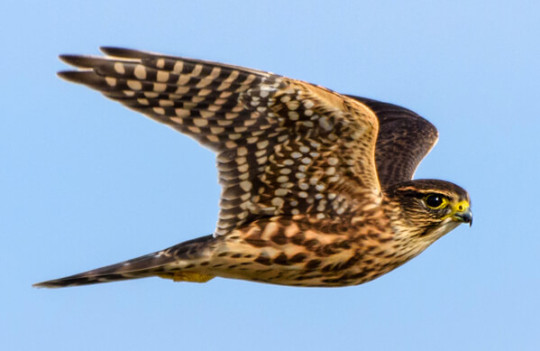
Merlin (Falco columbarius), family Falconidae, order Falconiformes, found across much of Eurasia, North America, and norther South America and northern Africa.
photograph by Tim Zurskowski
#merlin#falcon#raptor#falco#falconidae#falconiformes#bird#ornithology#animals#nature#north america#europe#asia#africa#south america
266 notes
·
View notes
Photo

tombik bird. #merlin FALCO COLUMBARIUS #wildbird https://www.instagram.com/p/CppL8dorLBT/?igshid=NGJjMDIxMWI=
1 note
·
View note
Photo
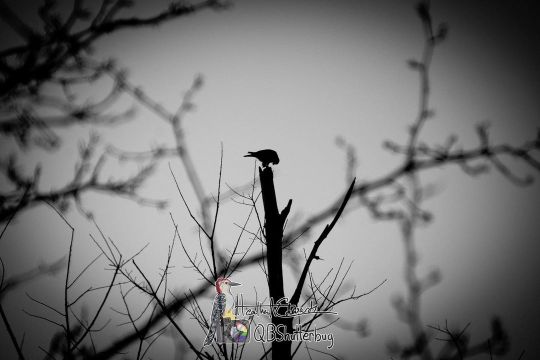
Merlin (Falco columbarius) These guys can be hard to spot, was rolling around one of the local parks when I saw him on top of this tree. Due to where he was and the Sun this silhouette was the best I could do with my camera. I sat and watched him a while as he was eating breakfast, a Blue Jay I think, and wasn’t bothered by me at all. #merlin #fishgottaswimbirdsgottaeat #bestofthebuckeyestate #harnessyourphotography #lgbtqphotographer #raw_birds #raw_allnature #raw_edit #raw_community #raw_potd #birds_captures #birdphotography #birdwatching #planetbirds #birdnerd #eye_spy_birds #your_best_birds #ohiobirding #birdingforall #best_birds_of_ig #ohionaturephotography #ohionaturelovers #ohionatrue #wildohio #yourwildohio #ohiowildlifephotography #ohiowildlife (at Wildwood Park) https://www.instagram.com/p/Cova607tEFh/?igshid=NGJjMDIxMWI=
#merlin#fishgottaswimbirdsgottaeat#bestofthebuckeyestate#harnessyourphotography#lgbtqphotographer#raw_birds#raw_allnature#raw_edit#raw_community#raw_potd#birds_captures#birdphotography#birdwatching#planetbirds#birdnerd#eye_spy_birds#your_best_birds#ohiobirding#birdingforall#best_birds_of_ig#ohionaturephotography#ohionaturelovers#ohionatrue#wildohio#yourwildohio#ohiowildlifephotography#ohiowildlife
1 note
·
View note
Text





Merlin - Esmerilhão (Falco columbarius): immature female
Vila Franca de Xira/Portugal (19/01/2023)
[Nikon D500; AF-S Nikkor 500mm F5,6E PF ED VR]
25 notes
·
View notes